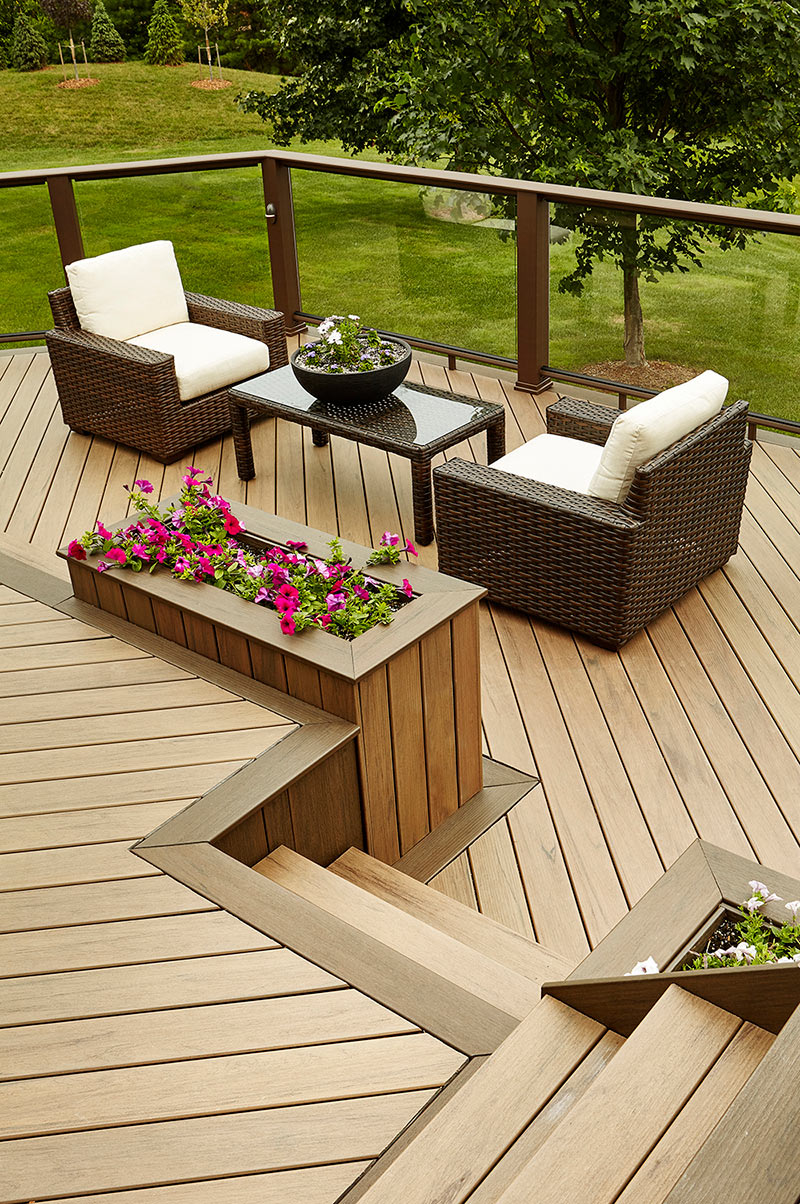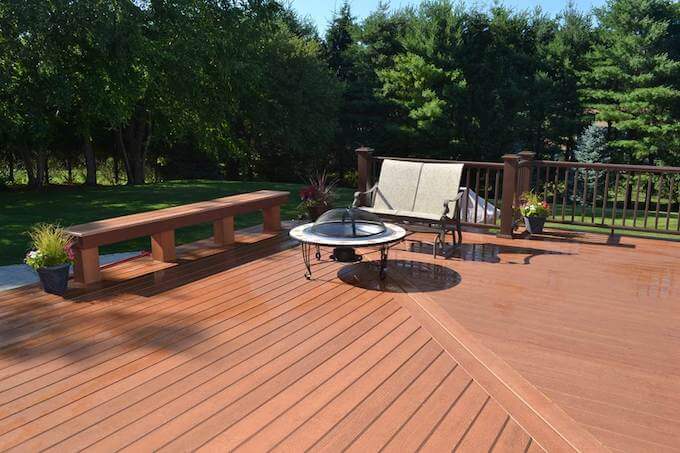Composite decking is a manmade alternative to traditional wooden decking. It is made of wood fibers, plastics, and bonding agents. Today we are going to highlight some of the benefits associated with choosing this type of decking, often purchase from https://www.dinodecking.co.uk/category/composite-decking-boards/

Less Maintenance
Wood decking requires regular maintenance, however, with composite the upkeep is minimal. This is because the boards rarely need to be stained, sealed or painted. They are fade resistant even when exposed to direct sunlight, making them a hassle-free alternative to wood. Composite is also mold resistant, and it is not affected by wood rot or weather erosion. It is also much easier to clean than wood decking.
Longer Lifespan
Composite decking has a longer lifespan; if fitted professionally, they can last between 15 and 25 years or even longer. Although composite decking is slightly more expensive than wooden decking, the low maintenance and longer lifespan equals money saved over time.
Environmental Benefits
Composite is more sustainable than wood. The wood does not always come from sustainable forests. Hardwood decking is often made with trees that have been growing for a substantial period of time. The wood is mostly imported from tropical rainforests thus adding to the ever growing problem of global deforestation. Softwood has to be chemically treated to prepare it for decking; the chemicals used are harmful to the environment.
Recycling plastic bags helps to reduce the global plastic waste problem. In the US only 1 percent of plastic bags get recycled. The rest ends up in landfill, in the ocean or dumped. Encouraging consumers to purchase products that make use of recycled plastic bags and other items are crucial to the future sustenance of the planet.
Composite decking is mostly made from recycled plastic and wood. It is often made from recycled household plastic, sawdust, and wooden offcuts. Making it more sustainable and less harmful to the environment than conventional wood decking.
Safe
One essential safety feature of composite decking is that the boards are splinter-free. They also have minimal water absorption which makes them slip resistant. This is not true of all composite, but some do offer this benefit.
Save Money Overtime
The initial cost of composite is typically higher than traditional wood decking. However, over time, the costs associated with the upkeep of wooden decking is more than that of composite. Therefore, in the long run, you save time and money when you choose composite decking over wood decking.
Durable
Composite decking is one of the most durable decking products on the market today. Let’s talk about the different types of decking on the market.
Wood Composite
Wood composite is comprised of wood fibers and plastic. It is highly weather resistant, and the composite boards are splinter-free, making it safer and easier to maintain. Thus saving you money in the long run and providing you with a hassle-free option.
Capped Wood Composite

Capped wood composite offers a realistic wood finish without the additional maintenance and long term costs associated with traditional wooden decking. Capped wood composite is also made from plastic and wood fibers, but it is coated with a protective cap making it scratch and stain resistant. It also provides a high quality, aesthetically pleasing finish.
Capped Polymer
Capped polymer composite deck boards are made of composite wood and plastic with a hardwearing polymer protective shield. The PVC coating effectively protects the boards from mold and rot.
Capped decking is more durable and hard wearing than uncapped decking. However, uncapped decking is generally cheaper than capped decking because they do not provide the same protection against fading and staining. Capped composite is finished with a protective coating that protects the boards from staining and fading; they are typically easier to clean than uncapped decking.
What Is Composite Decking Typically Made Of?
Composite decking boards are typically made from polyethylene(HDPE or LDPE) plastic or PVC as the base material. Polyethylene(recycled plastic bags) is mixed with wood fibers, and other materials to form durable decking boards.
Aesthetics
Composite decking offers a high-quality finish that is aesthetically pleasing, and with multiple finishes to choose from, it is an excellent alternative to traditional wood decking.
In conclusion, there are a number of benefits to choosing composite decking over wooden decking. It is essential for you to weigh up your options and ask your decking professional to explain the different options available to you. Composite often looks just as good as traditional wooden decking, minus the hassle of restaining and other essential maintenance. Also, most composite deck boards do are mold, splinter, slip and stain resistant.
At first glance, traditional wooden decking appears less costly, however, going for composite will save you money long term. Capped composite requires little or no maintenance and aesthetically, it maintains its fresh appearance over time. Environmentally, composite is the better option, using recycled plastics and wood makes composite more sustainable than wooden decking.
